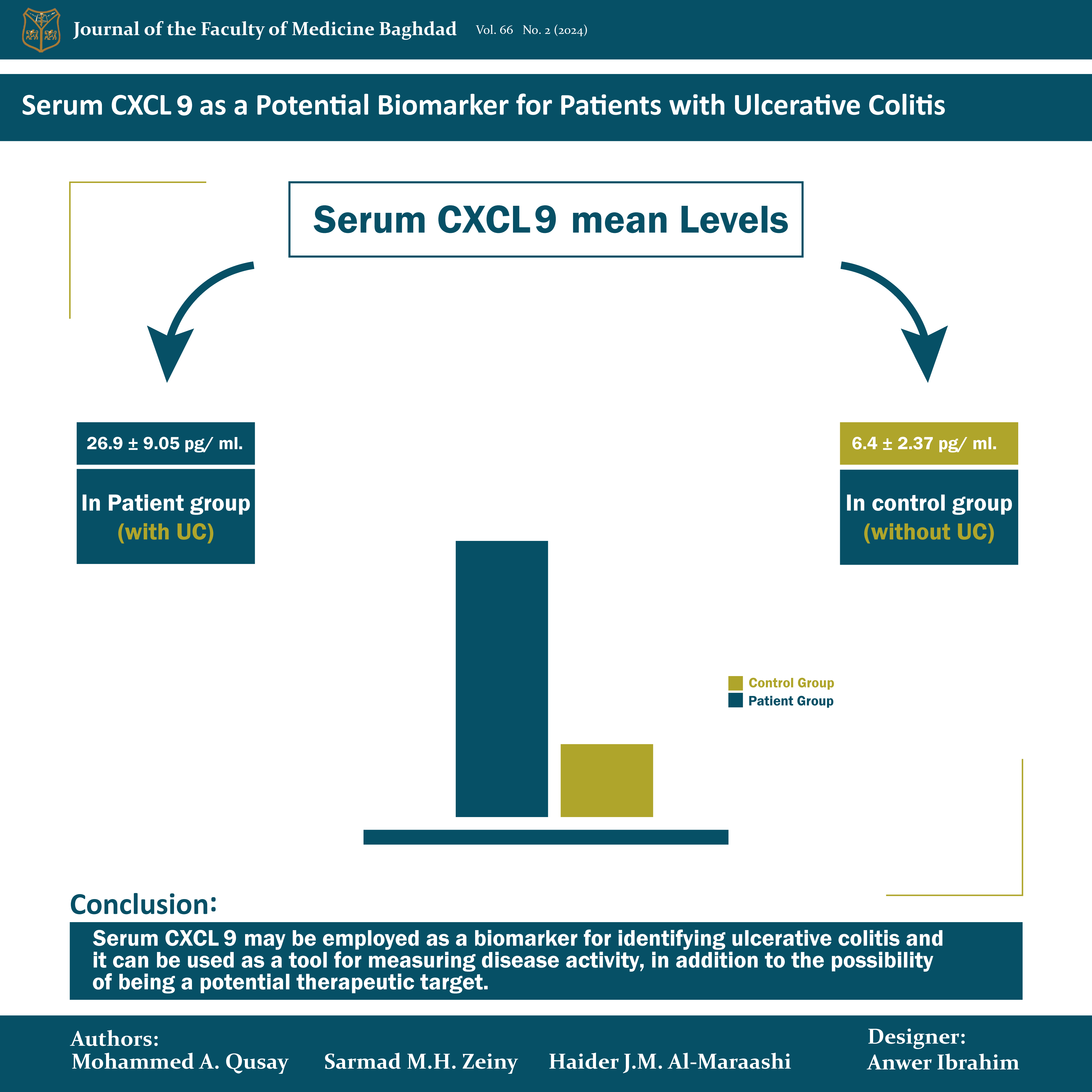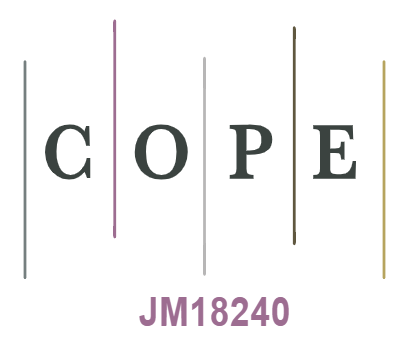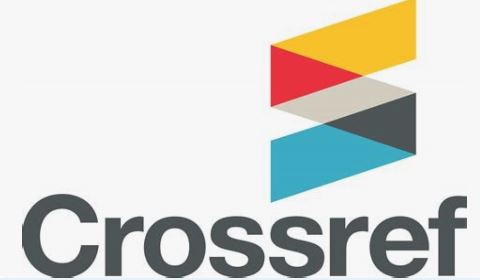Serum CXCL 9 as a Potential Biomarker for Patients with Ulcerative Colitis
DOI:
https://doi.org/10.32007/jfacmedbagdad.6622277Keywords:
Inflammatory bowel disease (IBD), Ulcerative colitis (UC), T-Lymphocytes, Chronic inflammation, CXCL 9Abstract
Background: Ulcerative colitis (UC) is an inflammatory bowel disease restricted to the large intestine, characterized by superficial ulceration. It is a progressive and chronic disease requiring long-term treatment. Although its etiology remains unknown, it is suggested that environmental factors influence genetically susceptible individuals, leading to the onset of the disease. (C-X-C) ligand 9 is a chemokine that belongs to the CXC chemokine family, it plays a role in the differentiation of immune cells such as cytotoxic lymphocytes, natural killer T cells, and macrophages. Its interaction with its corresponding receptor CXCR3 which is expressed by a variety of cells such as effector T cells, CD8+ cytotoxic T cells, and macrophage, leads to stimulation of the production of IFN-γ and TNF-α and in turn, stimulates the production of Th1 chemokines which results in promoting the inflammation.
Objectives: To assess the significance of serum chemokine (C-X-C) ligand 9 as a potential marker for identifying ulcerative colitis in adults with inflammatory bowel disease.
Methods: This is a case-control study that included 50 patients diagnosed with UC, aged between 18 and 75 years, compared to 50 healthy controls, aged between 18 and 60 years. The study was conducted between November 2022 and March 2023, at the Gastroenterology and Hepatology Teaching Hospital at the Medical City Complex in Baghdad. The serum samples were analyzed using the Enzyme-Linked Immunosorbent Assay (ELISA) technique.
Results: The mean ± SD in pg/ml of serum CXCL9 in the patient group was 26.9 ± 9.05 and in the control group was 6.4 ± 2.37 (p< 0.0001) which indicates a highly significant difference.
Conclusion: CXCL 9 may be a biomarker for identifying ulcerative colitis. It can be used as a tool for measuring disease activity, in addition to the possibility of being a potential therapeutic target.
Received: Dec. 2023
Revised: Feb. 2024
Accepted: Mar. 2024
Downloads
References
1. Alahmed A, Al-Rubaee E, H. Noon T. Human galectines and their contribution in the chronic colonic inflammation. Science Archives [Internet]. 2023 [cited 2023 Dec 6];04(02):141-6. https://doi.org/10.47587/SA.2023.4211
2. Attauabi M, Dahl EK, Burisch J, Gubatan J, Nielsen OH, Seidelin JB. Comparative onset of effect of biologics and small molecules in moderate-to-severe ulcerative colitis: a systematic review and network meta-analysis. EClinicalMedicine [Internet]. 2023 Mar;57:101866. https://doi.org/10.1016/j.eclinm.2023.101866
3. Jebur NJ, J. Kadhim D, M. Firhan Nawal. Belief about Medications among Sample of Iraqi Patients with Inflammatory Bowel Disease. Iraqi Journal of Pharmaceutical Sciences ( P-ISSN: 1683 - 3597 , E-ISSN : 2521 - 3512) [Internet]. 2018 Dec 6;32-41. https://doi.org/10.31351/vol27iss2pp32-41
4. Abdul-Hussein SS, Ali EN, Alkhalidi NMF, Zaki NH, Ad'hiah AH. Roles of il-17a and il-23 in the pathogenesis of ulcerative colitis and crohn's disease. Iraqi Journal of Science [Internet]. 2021 Aug 31;62(8):2526-35.
https://doi.org/10.1080/20905068.2019.1592938
6. Mohammed BI, Amin BK. Sociodemographic characteristics, smoking, and family history of patients with inflammatory bowel disease, northern part of Iraq. Med J Babylon [Internet]. 2022 Oct 1 [cited 2023 Nov 25];19(4):615-9.
https://doi.org/10.4103/MJBL.MJBL_162_22
7. Hassan J, Delmany A. Epidemiological and clinical characteristics of patients with inflammatory bowel disease in Erbil City. Medical Journal of Babylon [Internet]. 2018;15(4):281. https://doi.org/10.4103/MJBL.MJBL_65_18
8. Mohammed AS. Evaluation of Serum Vitamin D Level in Patients with Inflammatory Bowel Disease in Duhok Governorate. Med J Babylon [Internet]. 2019 [cited 2023 Nov 25];16(3):167-73.
https://doi.org/10.4103/MJBL.MJBL_17_19
9. Habanjar O, Bingula R, Decombat C, Diab-Assaf M, Caldefie-Chezet F, Delort L. Crosstalk of Inflammatory Cytokines within the Breast Tumor Microenvironment. Int J Mol Sci [Internet]. 2023 Feb 16;24(4):4002.
https://doi.org/10.3390/ijms24044002
10. Yongzhi X. COVID-19-associated cytokine storm syndrome and diagnostic principles: an old and new Issue. Emerg Microbes Infect [Internet]. 2021 Dec 1;10(1):266-76.
https://doi.org/10.1080/22221751.2021.1884503
11. Kim J, Noh S, Park JA, Park SC, Park SJ, Lee JH, et al. Recent Advances in Aptasensor for Cytokine Detection: A Review. Sensors (Basel) [Internet]. 2021 Dec 20;21(24):8491.
https://doi.org/10.3390/s21248491
12. Franzoni G, Pedrera M, Sánchez-Cordón PJ. African Swine Fever Virus Infection and Cytokine Response In Vivo: An Update. 2023;
https://doi.org/10.3390/v15010233
13. de Zoeten EF, Fuss IJ. Cytokines and Inflammatory Bowel Disease. Pediatric Inflammatory Bowel Disease [Internet]. 2023 [cited 2023 Mar 5];33-48.
https://doi.org/10.1007/978-3-031-14744-9_3
14. Tabassum S, Zafar M, Mirza MR, Choudhary MI, Haq I ul, Malik IR, et al. Association of Chemokine Genes CXCL9 and CXCL10 Polymorphisms with Tuberculosis in Pakistani Population. Pak J Zool [Internet]. 2022 Dec 1;54(6):2871-9.
https://doi.org/10.17582/journal.pjz/20210810130817
15. Dai H, Rachakonda SP, Penack O, Blau IW, Blau O, Radujkovic A, et al. Polymorphisms in CXCR3 ligands predict early CXCL9 recovery and severe chronic GVHD. Blood Cancer J [Internet]. 2021 Feb 27;11(2):42.
https://doi.org/10.1038/s41408-021-00434-2
16. Fallahi P, Ferrari SM, Ragusa F, Ruffilli I, Elia G, Paparo SR, et al. Th1 Chemokines in Autoimmune Endocrine Disorders. J Clin Endocrinol Metab [Internet]. 2020 Apr 1;105(4):1046-60.
https://doi.org/10.1210/clinem/dgz289
17. Magnusen AF, Rani R, McKay MA, Hatton SL, Nyamajenjere TC, Magnusen DNA, et al. C-X-C Motif Chemokine Ligand 9 and Its CXCR3 Receptor Are the Salt and Pepper for T Cells Trafficking in a Mouse Model of Gaucher Disease. Int J Mol Sci [Internet]. 2021 Nov 24;22(23):12712.
https://doi.org/10.3390/ijms222312712
18. Truelove SC, Witts LJ. Cortisone in ulcerative colitis. The BMJ [Internet]. 1955 Oct 29;2(4947):1041-8.
https://doi.org/10.1136/bmj.2.4947.1041
19. Babakir-Mina M. Epidemiological and Clinical Aspects of Ulcerative Colitis in Mosul city, Iraq. Kurdistan Journal of Applied Research [Internet]. 2019 Aug 21;56-66. https://doi.org/10.24017/science.2019.ICHMS.6
20. Khalid Mohammed A, Al-Qadhi HI, Mehdi Alkhalidi N, Adnan Fawzi H, professor A. Effectiveness of Infliximab and Adalimumab in Iraqi patients with ulcerative colitis-Real-World Data [Internet]. 2020 Apr [cited 2023 Nov 25]. Available from: https://japer.in/storage/models/article/KXxjygMb0bFMWrK0vwPgN0AI97dPcvL5oOH1ugsx3yHQm3hZWFziJYxspFTI/effectiveness-of-infliximab-and-adalimumab-in-iraqi-patients-with-ulcerative-colitis-real-world-da.pdf
21. Pasvol TJ, Horsfall L, Bloom S, Segal AW, Sabin C, Field N, et al. Incidence and prevalence of inflammatory bowel disease in UK primary care: a population-based cohort study. BMJ Open [Internet]. 2020 Jul 19;10(7):e036584.
https://doi.org/10.1136/bmjopen-2019-036584
22. Alharbi OR, Azzam NA, Almalki AS, Almadi MA, Alswat KA, Sadaf N, et al. Clinical epidemiology of ulcerative colitis in Arabs based on the Montréal classification. World J Gastroenterol [Internet]. 2014 Dec 14;20(46):17525-31.
https://doi.org/10.3748/wjg.v20.i46.17525
23. Abdul-Hussein SS, Ali EN, Zaki NH, Ad'hiah AH. Genetic polymorphism of HLA-G gene (G*01:03, G*01:04, and G*01:05N) in Iraqi patients with inflammatory bowel disease (ulcerative colitis and Crohn's disease). Egyptian Journal of Medical Human Genetics [Internet]. 2021 Dec 26;22(1):34. https://doi.org/10.1186/s43042-021-00158-9
24. Abdul-Hussein SS, Ali EN, Alkhalidi NMF, Zaki NH, Ad'hiah AH. Susceptibility role of soluble HLA-G and HLA-G 14-bp insertion/deletion polymorphism in inflammatory bowel disease. Egyptian Journal of Medical Human Genetics [Internet]. 2020 Dec 2;21(1):68. https://doi.org/10.1186/s43042-020-00104-1
25. Youness A, Miquel CH, Guéry JC. Escape from X Chromosome Inactivation and the Female Predominance in Autoimmune Diseases. Int J Mol Sci [Internet]. 2021 Jan 23;22(3):1114.
https://doi.org/10.3390/ijms22031114
26. Al-Khazraji KA. Descriptive study of Extragastrointestinal Manifestations of Ulcerative Colitis and their relation to disease activity in 100 Iraqi patients [Internet]. Vol. 24, J Fac Med Baghdad. Baghdad; 2011 Jan [cited 2023 Sep 18] p. 24-8. https://doi.org/10.32007/jfacmedbagdad.531903
27. Singh UP, Singh NP, Murphy EA, Price RL, Fayad R, Nagarkatti M, et al. Chemokine and cytokine levels in inflammatory bowel disease patients. Cytokine [Internet]. 2016 Jan 1;77:44-9.
https://doi.org/10.1016/j.cyto.2015.10.008
28. Elia G, Guglielmi G. CXCL9 chemokine in ulcerative colitis. Clin Ter [Internet]. 2018;169(5):e235-41. Available from: http://www.ncbi.nlm.nih.gov/pubmed/30393811
29. Atreya R, Neurath MF. Chemokines in Inflammatory Bowel Diseases. Digestive Diseases [Internet]. 2010 Oct [cited 2023 Nov 25];28(3):386-94. https://doi.org/10.1159/000320392
30. Andersson E, Bergemalm D, Kruse R, Neumann G, D'Amato M, Repsilber D, et al. Subphenotypes of inflammatory bowel disease are characterized by specific serum protein profiles. Karhausen J, editor. PLoS One [Internet]. 2017 Oct 5;12(10):e0186142. https://doi.org/10.1371/journal.pone.0186142

Downloads
Additional Files
Published
Issue
Section
License
Copyright (c) 2024 Mohammed A. Qusay, Sarmad M.H. Zeiny, Haider J.M. Al-Maraashi

This work is licensed under a Creative Commons Attribution 4.0 International License.










 Creative Commons Attribution 4.0 International license..
Creative Commons Attribution 4.0 International license..


